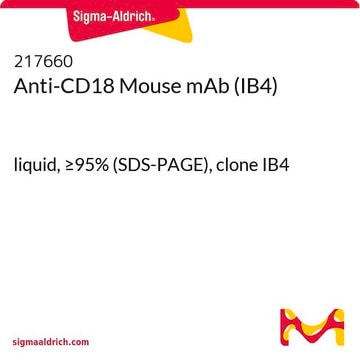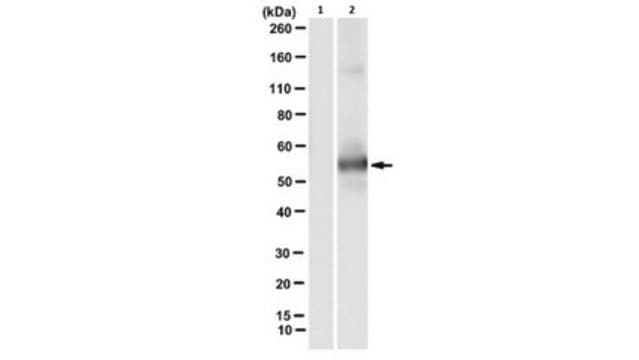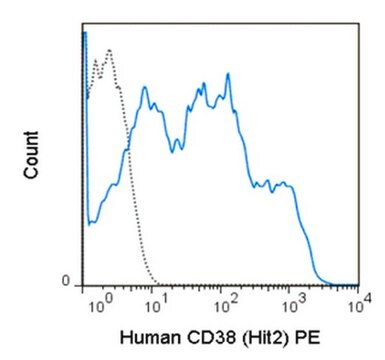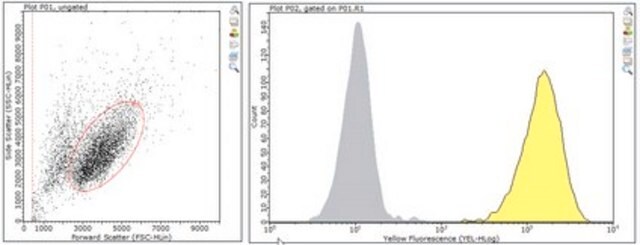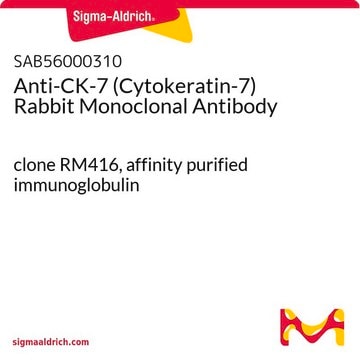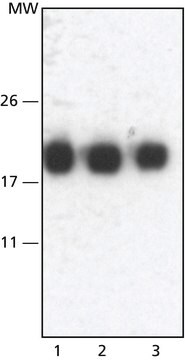MABT875
Anti-phospho-cytokeratin-18 (K18) (Ser33) Antibody, clone IB4
clone IB4, from mouse
Synonim(y):
Keratin type I cytoskeletal 18, Cell proliferation-inducing gene 46 protein, CK-18, Keratin-18, K18
About This Item
Polecane produkty
pochodzenie biologiczne
mouse
forma przeciwciała
purified immunoglobulin
rodzaj przeciwciała
primary antibodies
klon
IB4, monoclonal
reaktywność gatunkowa
human
opakowanie
antibody small pack of 25 μg
metody
immunocytochemistry: suitable
immunofluorescence: suitable
immunoprecipitation (IP): suitable
western blot: suitable
izotyp
IgG1κ
numer dostępu NCBI
numer dostępu UniProt
docelowa modyfikacja potranslacyjna
phosphorylation (pSer33)
informacje o genach
human ... KRT18(3875)
Powiązane kategorie
Opis ogólny
Specyficzność
Immunogen
Zastosowanie
Immunoprecipitation Analysis: A representative lot immunoprecipitated phospho-cytokeratin-18 (K18) (Ser33) in immunoprecipitation applications (Ku, N.O., et. al. (1998). EMBO J. 17(7):1892-906).
Immunofluorescence Analysis: A representative lot detected phospho-cytokeratin-18 (K18) (Ser33) in Immunofluorescence applications (Ku, N.O., et. al. (1998). EMBO J. 17(7):1892-906).
Western Blotting Analysis: A representative lot detected phospho-cytokeratin-18 (K18) (Ser33) in Western Blotting applications (Yoon, K.H., et. al. (2001). J Cell Biol. 153(3):503-16).
Cell Structure
Jakość
Western Blotting Analysis: 2 µg/mL of this antibody detected phospho-cytokeratin-18 (K18) (Ser33) in lysate from HeLa cells treated with Calyculin A/Okadaic Acid.
Opis wartości docelowych
Postać fizyczna
Przechowywanie i stabilność
Inne uwagi
Oświadczenie o zrzeczeniu się odpowiedzialności
Not finding the right product?
Try our Narzędzie selektora produktów.
Certyfikaty analizy (CoA)
Poszukaj Certyfikaty analizy (CoA), wpisując numer partii/serii produktów. Numery serii i partii można znaleźć na etykiecie produktu po słowach „seria” lub „partia”.
Masz już ten produkt?
Dokumenty związane z niedawno zakupionymi produktami zostały zamieszczone w Bibliotece dokumentów.
Nasz zespół naukowców ma doświadczenie we wszystkich obszarach badań, w tym w naukach przyrodniczych, materiałoznawstwie, syntezie chemicznej, chromatografii, analityce i wielu innych dziedzinach.
Skontaktuj się z zespołem ds. pomocy technicznej